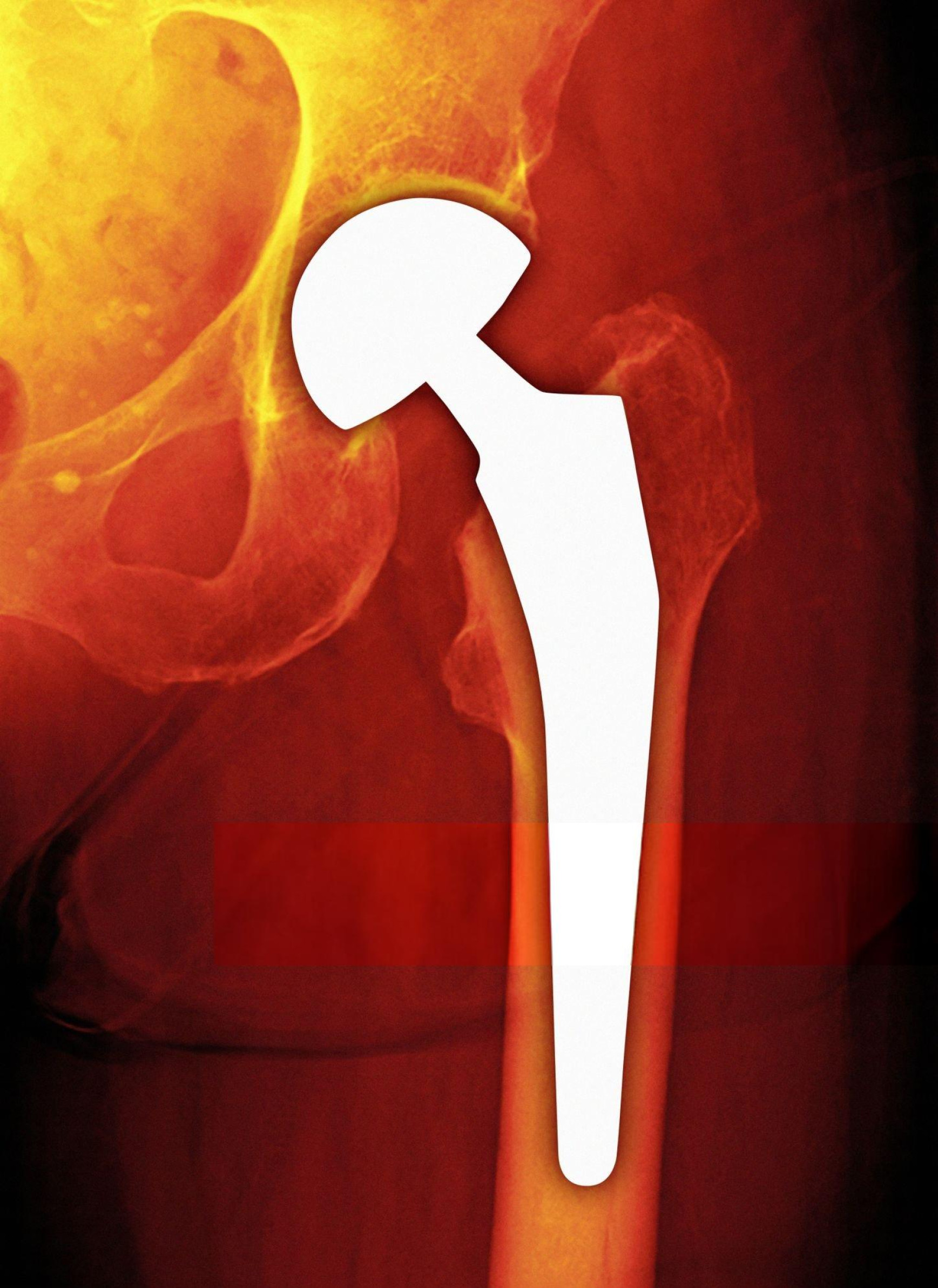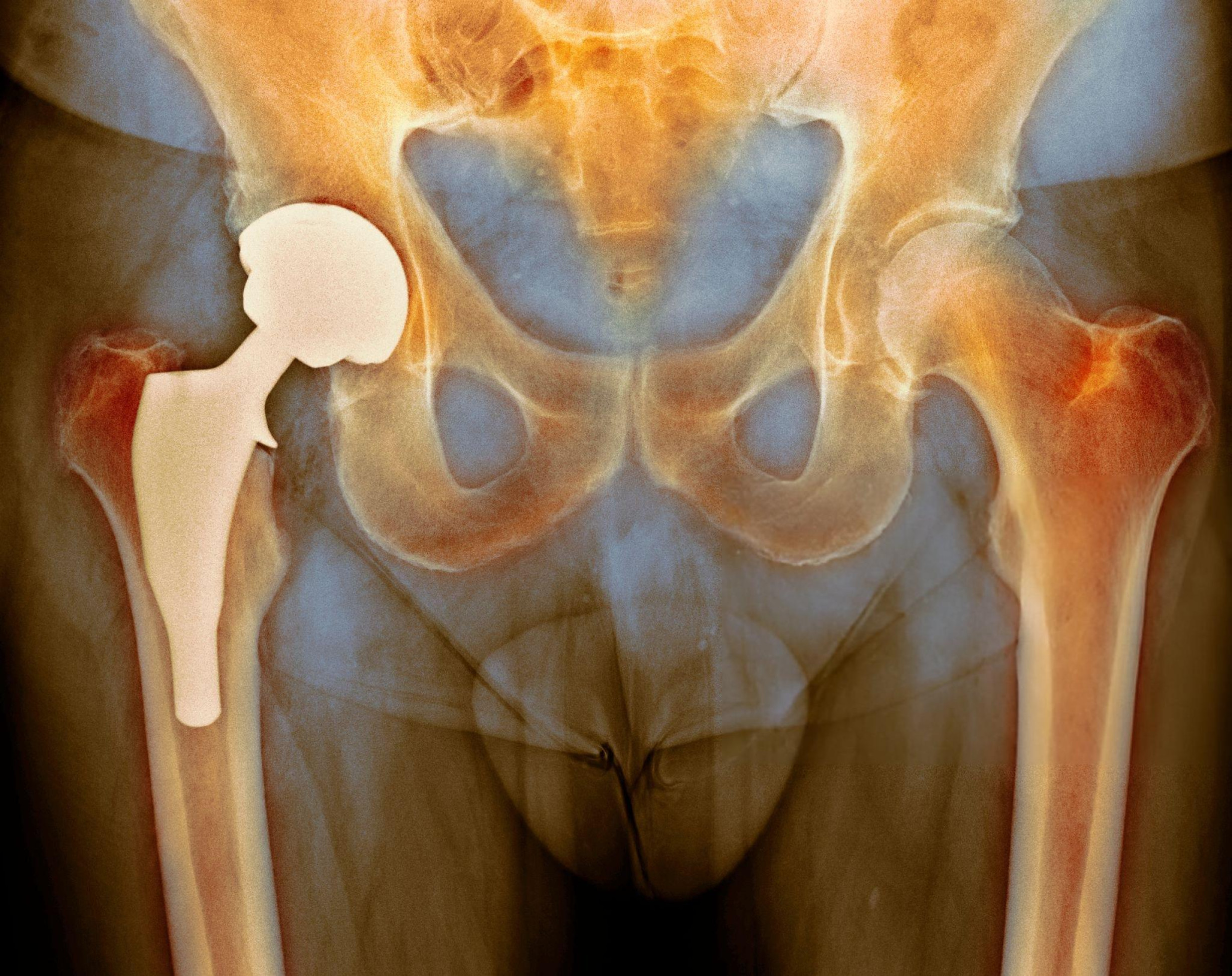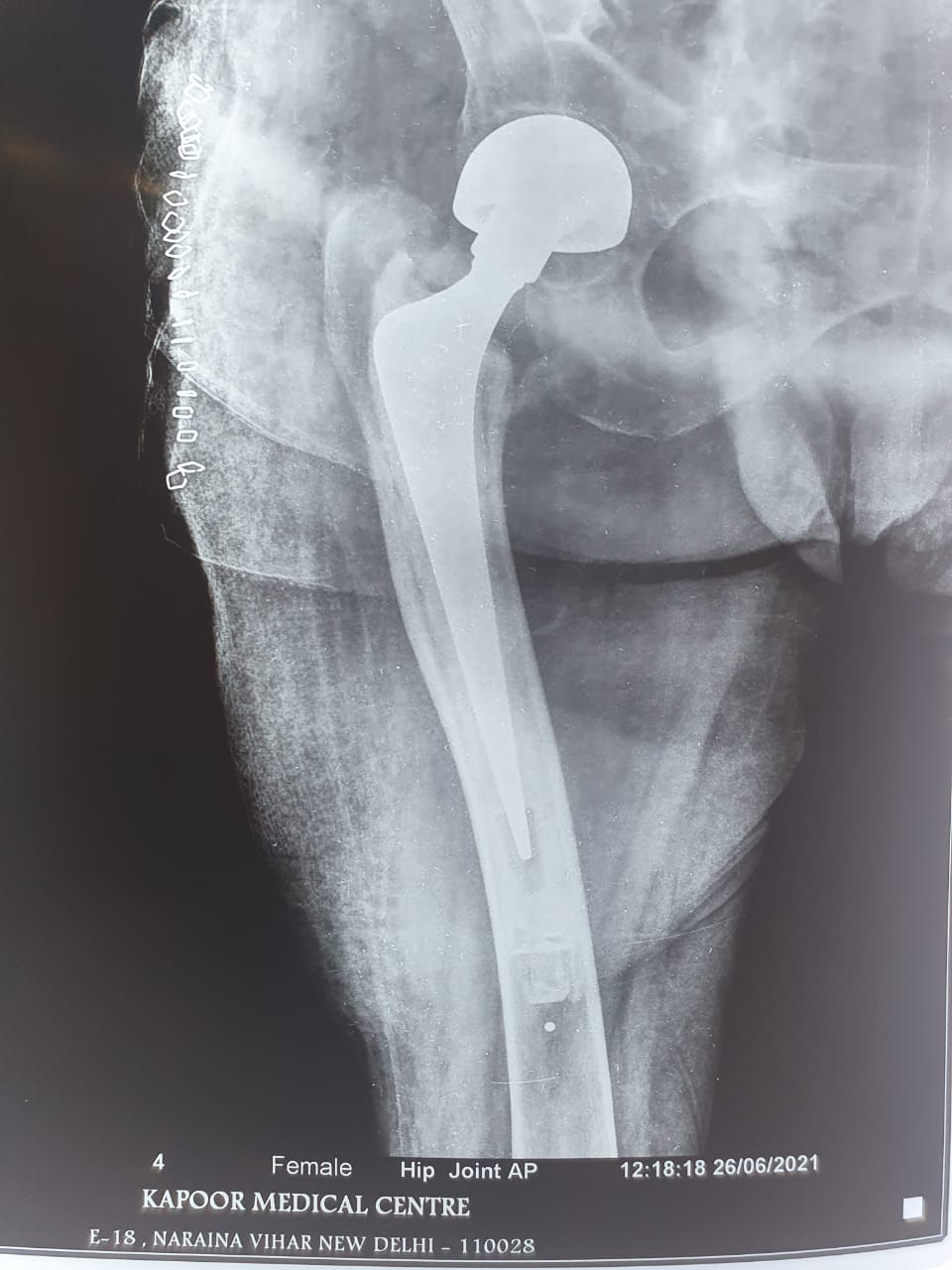Total Hip Replacement in Delhi (THR)
Total Hip Replacement in Delhi with Dr. Neelabh offers personalised hip replacement surgery using modern implants, precise technique, advanced pain control, and a fast‑track rehab plan.
Serving patients across Delhi & NCR (Naraina, Karol Bagh, Patel Nagar, and more)

Hip-focused expertise
Experienced in complex hip arthritis, AVN, and revision cases.
Advanced implants
Ceramic and highly cross‑linked polyethylene bearings; cemented/cementless options.
Fast‑track recovery
Multimodal pain control and early mobilisation protocols.
Clear guidance
From pre‑op planning to physiotherapy, we support every step.
What is Total Hip Replacement in Delhi?
Total Hip Replacement (hip arthroplasty) replaces the damaged ball‑and‑socket surfaces of the hip with medical‑grade components to relieve pain and restore motion. The acetabulum (socket) receives a cup and liner, and the femur (thigh bone) receives a stem and head. Bearing options include ceramic‑on‑polyethylene and ceramic‑on‑ceramic.
THR is recommended for advanced osteoarthritis, avascular necrosis (AVN), rheumatoid arthritis, childhood hip disease sequelae, or certain fractures when pain and stiffness limit daily life and non‑surgical care is no longer effective.

Who is a Good Candidate?
Severe hip pain and stiffness
Pain limits walking, standing, or sleep; difficulty wearing shoes or climbing stairs.
Advanced arthritis/AVN on imaging
Joint space loss, deformity, or femoral head collapse.
Non‑surgical care no longer helps
Medicines, injections, activity modification, and physiotherapy have not provided relief.
Ready for rehab
You can commit to post‑op exercises and safety precautions.
Patients seeking Total Hip Replacement in Delhi often benefit from a personalised plan that matches anatomy, activity level, and goals.
Benefits
- Powerful pain relief and improved mobility
- Corrected limb length and alignment (when needed)
- Return to low‑impact activities: walking, cycling, swimming
- High satisfaction; modern implants often last 15–20+ years
Risks & How We Reduce Them
- Infection, blood clots (DVT/PE), dislocation, fracture, nerve injury
- Leg length difference, stiffness, persistent pain, implant wear/loosening
- Risk reduction: meticulous technique, antibiotic protocols, DVT prevention, precise component positioning, and structured rehab
How Hip Replacement is Performed
- Anaesthesia & incision: Spinal/epidural or general anaesthesia. An approach (posterior or anterolateral) is chosen based on your case.
- Socket (acetabulum): The socket is prepared and a cup is placed—usually press‑fit—with a liner (polyethylene or ceramic).
- Femur: The femoral canal is prepared and a stem is inserted with a matching head; fixation may be cemented or cementless.
- Balance & stability: Trial components check leg length and soft‑tissue tension; final implants are placed.
- Closure & recovery: The incision is closed; pain control and early mobilisation begin the same day or next.
Implant & bearing choices
Ceramic heads with highly cross‑linked polyethylene liners are common; ceramic‑on‑ceramic in select cases. Choices are tailored to age, bone quality, and activity.
Navigation/Robotics
Computer guidance or robotic assistance may aid alignment and leg length checks in specific cases; not required for excellent outcomes.
Pain management
Multimodal regimen (nerve blocks, anti‑inflammatories, targeted medicines) reduces opioids and speeds recovery after Total Hip Replacement in Delhi.
Recovery Timeline
- Day 0–1: Stand and walk with assistance; begin hip precautions as advised.
- Week 1–2: Home/outpatient physiotherapy; swelling control; many patients use a stick/cane.
- Week 3–6: Strength and motion improve; return to desk work/light activity.
- Month 3–6: Most resume low‑impact activities and feel the full benefits of surgery.
Timelines vary by health, bone quality, and adherence to therapy after Total Hip Replacement in Delhi.

Where to Consult Dr. Neelabh
Jeewan Hospital
Jeewan Hospital, Metro Station, 2-B, Pusa Rd, opp. Pillar No.-107, 108, Block B, Karol Bagh, New Delhi, Delhi, 110005
🕓 3:00 PM – 4:00 PM
BLK Hospital
A-4-6, Pusa Rd, Near Rajendra Place Metro Station, New Delhi-110005
🕓 4:00 PM – 6:00 PM
Clinic Intermed
Clinic Intermed, 38/16, Block 38, East Patel Nagar, Patel Nagar, New Delhi, Delhi, 110008
🕓 6:00 PM – 8:00 PM
Timings can vary on holidays and surgery days—please call +91-9810117204 to confirm.
Cost & Insurance
Costs depend on implant selection, facility and anaesthesia fees, and insurance coverage. We verify benefits and provide a transparent estimate before scheduling your Total Hip Replacement in Delhi.
- Insurance pre‑authorisation & benefits check
- Clear estimate of out‑of‑pocket costs
- Financing options where applicable

How to Prepare
Medical clearance
Pre‑op evaluation, labs, ECG, and imaging as needed.
Medication review
Guidance on blood thinners, diabetes medicines, and supplements.
Prehab
Strengthen hip abductors and core; practise assistive device use.
Home setup
Chair height, toilet aids, remove tripping hazards, arrange support.
Healthy habits
Stop smoking, optimise weight and blood sugar, maintain skin health.
Frequently Asked Questions
Is THR right for me?
How long does a hip replacement last?
Will I need hip precautions?
When can I drive?
Can I sit cross‑legged or squat after THR?
Ceramic vs. metal—what’s better?
Is robotic hip replacement better?
What are the main risks?
Ready to take the next step?
Let’s build a plan tailored to your hip, lifestyle, and goals.
